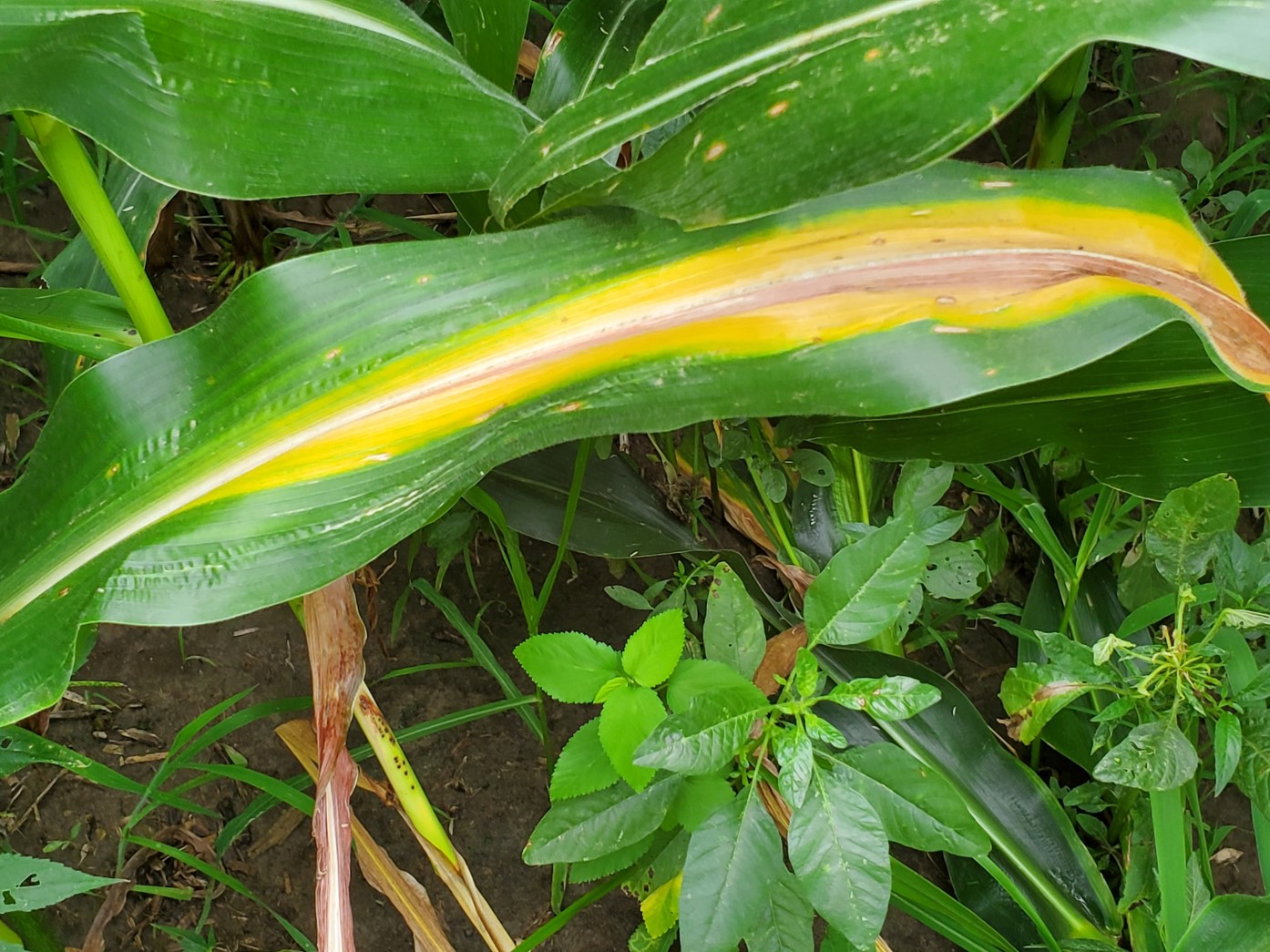Plant & Prepare to Pivot
By Jerry Hartsock & Dakota Miller
Cutting Edge Consulting & Research Services
By Jerry Hartsock & Dakota Miller
Cutting Edge Consulting & Research Services
June 2025 -- As some areas in the Cornbelt are just past, at, or approaching V7 in corn, it is time to start thinking about tissue testing, mid/late season nitrogen and sulfur levels, as well as key fungicide plans. All these tactics require a proactive approach, not reactive. Corn is in a very rapid growth phase of its life right now and is going to reach its peak demand for nitrogen in just a couple short weeks. There are tactics and tools to use to check nitrogen levels, be more efficient with more forms of nitrogen, and increase efficiency through fungicide use. This is crucial for AgVenture brand germplasm.

We generally use tissue testing leading up to fungicide applications as one tool in our toolbox to get a general idea of where we are at with nutritional demands. This allows us to also establish trends for the year and understand what we are seeing across the Cornbelt in fields under varying conditions and management programs. Gathering this information allows us to piece together this data with yields and visual observations to note what programs are the most efficient, effective, and how we can better our programs for next season. These tissue test results can help guide decisions on any foliar nutrition you may want to add to the fungicide application. At this point in time, you should have planned out what exactly your mid and late season nitrogen sources are going to be. Stabilized NH3 is a very common and great option. Other options to be able to get multiple forms of nitrogen out at multiple times WITH sulfur would include a mix of urea and AMS, y-drops in most cases including UAN, ATS, and a good shot of boron for pre-tassel, or fertigation through a pivot if you are lucky to have that very efficient option! We say this for you to keep in mind that a foliar nitrogen product at 1-2 GPA is a great supplemental source of nitrogen and a great boost with the fungicide, but it cannot make up for larger deficiencies of nitrogen. Utilize visual symptoms, tissue testing, nitrate tests, etc. together to understand how short you are or if you are short at all.
Tissue testing is essentially a polaroid picture of how a field/area felt on the day that you sampled. Therefore, it is important to have a strategy around your plans for tissue testing. To avoid big nutrient fluctuations or high levels of stress in the plant, we suggest starting your sampling mid-morning and wrapping it up before the heat of the afternoon. If you are pulling samples multiple times from the same area, try to remain consistent in your sampling times and conditions. Take 15 - 20 leaves per sample to send off to a reputable lab who can report results back to you in a timely manner.
Our hope is that you already have your corn fungicide products paid for and in possession, and if not, our suggestion is to get that process done quickly before your product choices are limited or prices increase again. Fungicides are ALWAYS a key pass already built into our cropping plans because we know they work when we apply them for more than just disease. Our list of reasons to apply fungicides include:
Higher yields (often 15 - 25+ bpa even in a low disease year
Stress alleviation (including keeping the canopy cooler)
Better efficiency of feeding
Longer grain fill period
Greatly improved standability
Delays ethylene gas production
Disease control or suppression
You will notice that disease control didn’t make the top five. This is because most of our return on investment (ROI) from fungicides come from the other fungicide benefits listed. We also see that the more aggressive managers who plan better (like booking products early) plant better (have a higher N.E.P.S. or Net Effective Plant Stand), and fertilizer better (sets the crop up for higher yields) have a much higher ROI compared to those who apply fungicide purely for disease control. If we were asked what the key time for a single fungicide pass is, our recommendation would be to use a product at full tassel with 2 - 3” of silk growth. There are many options in the market to choose from for your key corn fungicide pass. From our observations in the field, we believe you should use a product with at least two modes of action. If it has a third or a newer active ingredient, that's even better. The combination of active ingredients in the products below lead to greater longevity of "fungicide benefit" and provides broad-spectrum coverage.
Tap into your AgVenture Yield Specialist for their recommendations on fungicides for your elite genetics. They can review your plans and provide guidance on timing and priorities like in corn on corn or racehorse hybrid situations that take number one priority for us every year. Don’t give up on this crop. Fuel it and manage it until it’s in the bin!
Opinions expressed and any recommendations mentioned are of Cutting Edge Consulting & Research Services and its employees.